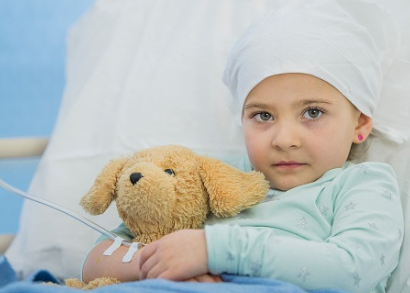The cancers that children get, called "pediatric cancers," are usually different from those that commonly affect adults. Fortunately, children often respond better to treatment than adults.
Common types of pediatric cancers include leukemia, brain and spinal cord tumors, neuroblastoma, Wilms tumor, lymphoma, rhabdomyosarcoma, retinoblastoma, and bone cancer.
Families looking for specialized care can access expert Pediatric Cancer Treatment in Nanakramguda, Hyderabad, where tailored therapies and compassionate care are provided to improve outcomes for young patients.

Leukemia is by far the most common type of cancer in kids. About 1 in 3 children who get cancer have it.
Leukemia is a form of blood cancer. That means it starts and spreads in cells that the body would normally turn into blood cells. These cells are inside bone marrow, where the body makes fresh blood. There are two main categories of leukemia. Doctors call the first one "acute leukemia." These are fast-spreading cancers that need prompt treatment.
There are two types of acute leukemia:
Doctors call the second main category of leukemia "chronic leukemia." These are slow-growing but harder to treat than acute leukemia. Chronic leukemia can show up in either lymphocytes or myeloid cells. They're very rare in kids.
There are a few other rare forms of leukemia. These include juvenile myelomonocytic leukemia (JMML), which shows up in a child's myeloid cells. It's not as fast-growing as acute leukemia, but it's also not as slow-growing as chronic leukemia.
Symptoms. Leukemia can cause a wide range of symptoms in kids. Some of the common ones include:
Many childhood issues and ailments can cause symptoms that overlap with leukemia. If your child has any of these symptoms, chances are good that cancer isn't the reason. Still, you'll want to report them to your child's doctor.
Tumors are clumps or masses of overgrown cells. Some tumors are "benign," meaning they are not cancer and are harmless. But others are malignant, which means they are made of cancer cells.
About 26% of childhood cancers are brain and spinal cord tumors.
For brain and spinal cord tumors, symptoms include headaches, nausea, and vomiting. Your child might also have crossed eyes and blurred vision. Balance problems and seizures could also happen.
>Doctors aren't sure what causes brain and spinal tumors in children. Genetic changes may play a role. Scientists think radiation treatment in the area of the brain that a child may have received for another disease may also be linked to this type of cancer.
Some of the main treatments for brain and spinal tumors are surgery, radiation therapy, chemotherapy, and targeted therapy.
Neuroblastomas are tumors that start in nerve cells. These can form anywhere in the body but often turn up first in the stomach area. They make up about 6% of childhood cancers.
The symptoms include a lump or swelling around the tummy or in your child's legs, upper chest, neck, or face.
Your child may also lose weight. They could have trouble breathing or swallowing, or might have problems going to the bathroom. Another symptom is pain in the bones.
Treatments include surgery, chemotherapy, and radiation therapy. Stem cell transplants are an option in some cases. Doctors may also suggest treatment with chemicals called retinoids.
Another possible treatment is immunotherapy, which is medicine that uses your child's immune system -- the body's defense against germs -- to fight the disease.
These are tumors that form in the kidneys. They make up about 4% of childhood cancers.
Doctors aren't exactly sure why children get Wilms tumors, but like other cancers, gene changes may play a role. Some kinds of birth defects may also be linked to Wilms tumors.
Treatments include surgery, chemotherapy, and radiation therapy.
Symptoms include a swollen belly or a lump in that area. Fever, nausea, and a loss of appetite can also happen. So can constipation or blood in the urine.
This type of cancer forms in immune system cells called lymphocytes. It tends to show up first in the areas that contain lymph nodes or tissues, such as the throat, armpits, or groin.
Lymphomas come in two main types. These are:
Explore More : Chemotherapy in Nanakramguda, Hyderabad